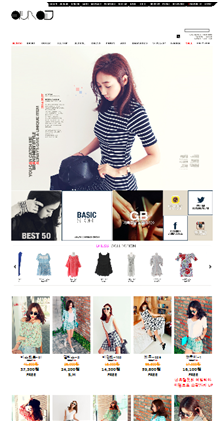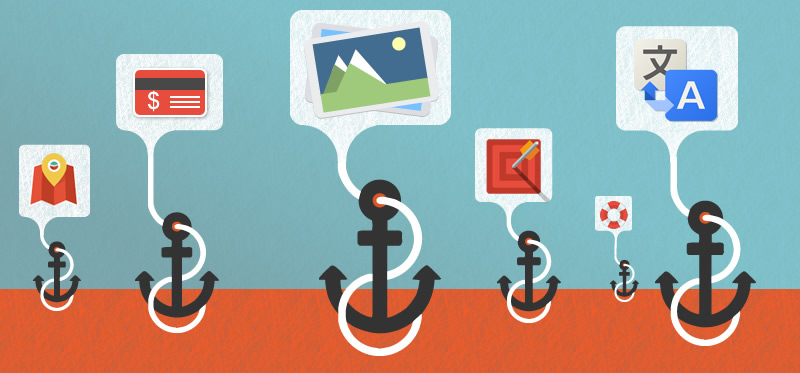When considering branching out into new target markets it’s really important that you research your customer and their activities online which may vary depending on their global location. There are several things that you need to establish before expanding your international reach, and in this post I hope to explore some of these areas using an example from my experiences.
Example Website
The owner of a small, boutique fashion house wanted to establish and promote a version of their eCommerce website in Korea but had done very little in the way of researching her target market. In order to help gain a better understanding of Korean consumers a Trust Anchor Audit was conducted.
We will use this example as an illustration of some of the essential things to consider when researching your target market; in this case South Korea.
Use of Images
 Images are particularly important when it comes to international eCommerce and depending on your target market sometimes less is more, other times more is more! Let’s look at the example to the left from Korean fashion site Aura-J. This homepage shows a variety of different uses of images from editorial style fashion shoots to simple garments and live action shots of models wearing the garments.
Images are particularly important when it comes to international eCommerce and depending on your target market sometimes less is more, other times more is more! Let’s look at the example to the left from Korean fashion site Aura-J. This homepage shows a variety of different uses of images from editorial style fashion shoots to simple garments and live action shots of models wearing the garments.
Motion images are highly popular to Korean consumers. In this example they allow the customer to see how the clothing will move, flow and hang should they choose to make a purchase.
Online eCommerce sites have the limitation that customers are unable to “try before they buy”. This is a potential issue for all online retailers on a global scale so making the most of the images that are included on your site, and adapting them to suit your target audience will certainly be of benefit to you.
In the case of the example website the use of images was extremely limited with a very minimalistic homepage and only one static shot of each product in their online store. This set up was very different to their Korean competitors and was highlighted in the Trust Anchor Audit.
Translation & Linguistic Content
In the case of the example website outlined above, this company chose to translate all of the written content on their existing English website into Korean. Now, as a member of the translation industry I would always recommend that a website is translated into the language of the target audience, however it is highly important that a company researches their competitors to see how they handle their translated content.
When it comes to fashion websites it would seem that Korean consumers prefer a mix of English and Korean. This may have something to do with the fashionable Gangnam District of South Korea being more westernised, especially when it comes to style, trends and fashion. Let’s take another look at Aura-J as an example of how English and local Korean terms have been combined.
Here we can see that the navigation of the website appears in English but when hovered over the Korean term is shown. Websites translated entirely in Korean are considered by younger generations of shoppers as being old fashioned in comparison, and are more likely to shop on websites which are appear more “East meets West”.
Payment Terms & Conditions
You might think that PayPal is the most popular international payment method for online purchases; however you’d be wrong. Some cultures are still rather wary when it comes to shopping online. Take Russia for example, it used to be quite common for products to be bought over the counter using cash. Although Russian consumers have started to become savvier when it comes to online purchases, they tend to use their preferred local methods of payment such as Yandex Money.
For the Korean market the same applies. Korean consumers want to know that they can trust the website they are considering purchasing from. There are certain certifications which Korean eCommerce websites should possess and display on their site which show that customers can trust their website to protect their information. Four of these can be seen below from left to right: Private Information Management System (PIMS) Certificate, Customer-focused Management Excellent Company (CCM), e-Privacy Mark, and the Korean Online Shopping Association (KOLSA).
Trust anchors like these which are relevant to the international markets you are attempting to target will show your potential global customer base that you are a reputable merchant who they can safely, and easily, buy from.
Currency is another formality to consider when setting up your international website. The example eCommerce website applied a more western style of formatting to their Korean prices in their store. See details to the right.
Here we can see that a decimal place has been applied and the symbol for the South Korean Won is displayed to the left of the figure. Korean prices are traditionally written as 99,999원 rather than 원99,999.99 as shown on this Korean site.
Although this seems like a trivial thing to point out you’d be surprised how local consumers would see something like this and automatically know that the company they are buying from is not local. And, you want to appear local in your target market right? To build trust and develop interest in your brand internationally? Then double check these little intricacies before your site goes live. An Online QA conducted by a native speaker of your target market would identify and cover such aspects of your website before you make it live.
Further Advice
You’d be surprised how many company websites are out there which haven’t been properly researched or orientated towards their international target markets. You can see from the eCommerce example mentioned in this post that these are often the most complex websites to localise due to the great differences between global consumers whose actions vary from country to country.
The first place to start is to conduct a thorough competitor audit to see just how local companies market themselves and their products in your target region. This will give you a good idea of the approaches you could also implement for your own site. A Trust Anchor Audit would also highlight examples from your competitors.
Product selection is also important. If there are potential issues in your branding, logos or product names it is important to identify any cultural differences and address these prior to sending your product feeds for translation.
Visuals, images, videos, animations, and interactive areas of your site should also be considered depending on your target market. Japanese consumers love fun, interactive features on websites whereas French online shoppers prefer websites to be more conformist.
For more information on other trust anchors to consider for your international websites then have a look at a previous post by Benjamin Lefebvre.










